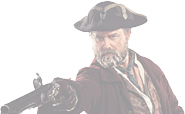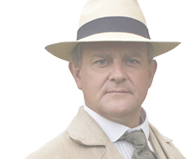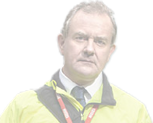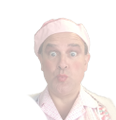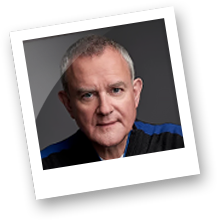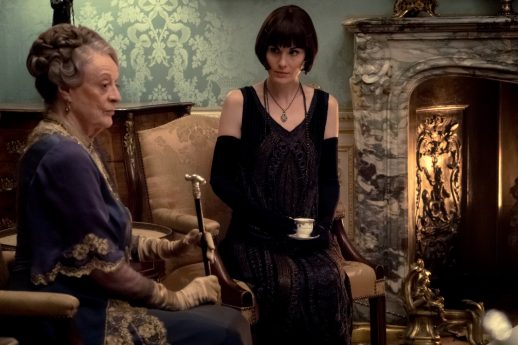Article by Emily Zemler for the LA Times
LONDON — Inside Highclere Castle’s lavish dining room, where members of the Crawley family are sitting down to lunch with King George V and Queen Mary, it feels like no time has passed since the end of “Downton Abbey.”
Nearly every beloved character, from both upstairs and downstairs, is back for the production of the “Downton Abbey” film, which jumps ahead from the events of the series finale to 1927. Today, on a crisp October morning, the cast is shooting take after take of the dining scene, and despite its tediousness there’s a real sense of joy in being back together.
“I think by the end of the series [the film] was inevitable,” says Michelle Dockery, who plays Lady Mary. “We’d been talking about it for a long time and it was only a matter of time before they rallied the troops and got everyone in the same country and got people to commit to it. We knew it wasn’t quite over. And when we went back it felt like we’d never left.”
There had been discussion about a potential film follow-up to the six seasons of “Downton Abbey,” an Emmy-winning international smash hit that aired on PBS in the U.S. and ITV in the U.K., since before the series ended in 2015. The actors knew the possibility was out there, but by the time the series concluded the massive ensemble cast was spread far and wide working on other projects.
The television series “Downton Abbey” followed the lives of the Crawley family and the servants who worked for them at the turn of the 20th century in an Edwardian English country house.
“We were committed to developing a movie by the time we wrapped on the last season,” says producer Gareth Neame of the feature film opening Sept. 20 from Focus Features. “The complicated thing was really getting everyone in line at the same time. You can imagine the challenge of a show with 18 or 20 main characters.” He adds, “It was a difficult position to be in as a producer because you couldn’t recast anyone.”
“There was a moment of everyone going, ‘We need to jump in all together,’” says Hugh Bonneville, who plays Robert Crawley, the Earl of Grantham. “It wouldn’t be the same if half of us did it. It could only work if we all jumped in. Some people may have had reservations and there were some timing issues, so full credit to the producers for actually getting us all together. And I’m glad we did.”
For Julian Fellowes, the show’s creator who also wrote the film, a movie wasn’t necessarily a sure thing. He’d written the finale as a concrete (and happy) ending, and there needed to be a reason to return. Fellowes, who notes that the film “crept up” on him, spent months writing the script and then sending it out to the producers for notes.
He wanted to ensure that each character had something to do within the two-hour run time and that every storyline ultimately felt resolved. He determined that the main plot would center around King George V and Queen Mary paying a visit to Downton Abbey, an event that could likely have happened at the time.
“I was looking for a storyline that affected everyone,” Fellowes says. “We used to do that in the Christmas specials as well, where they went to Scotland — or wherever — and it would affect the servants as much as it would affect the family. Everyone is involved in this single event and all of their stories are coming off from this single event like branches from a trunk. I wanted something that was exciting-slash-disrupting for both the family and the servants and the local village.”
This action brings in new characters, including Imelda Staunton as Lady Maud Bagshaw, a relative of the Crawleys with royal connections, and Tuppence Middleton as Lucy Smith, who bonds with formerly working-class widower Tom Branson (Allen Leech).
It was important to Fellowes not to disrupt any of the happy endings he’d already afforded the characters, so the romantic drama primarily revolves around Branson upstairs and Daisy (Sophie McShera) downstairs (as well as an interesting new development for Rob James-Collier’s Thomas Barrow). “They were the two that weren’t, in that sense, settled,” Fellowes notes. “I had a reluctance to disturb what had been established.”
Besides the abridged run time, there wasn’t much difference in making a film versus making the TV series, particularly as much of the same crew returned. Highclere Castle, in Hampshire, remains the primary set, with the kitchens and servants’ quarters rebuilt on a soundstage. The real-life villages of Bampton and Laycock give a more expansive look at the village around Downton Abbey, slightly expanding the world. The budget was also higher, which means there are more ambitious sequences, like a royal parade, and the producers brought in Ben Smithard (“Blinded by the Light”) as cinematographer.
“When you’re sitting in a theater you have such a different sense of immersion in the event,” says director Michael Engler, who also helmed the series finale. “You want to take advantage of that as much as you can. When you see the scale of it you want to feel like it earns that. It needed to be on a bigger screen with better sound because the story is bigger and grander.”
Engler and Smithard also display Highclere Castle in new ways for the film, using helicopter and drone shots that weren’t available for the small screen. “The series was trying to be down on the ground with the people who lived there and part of our goal with the film really was to show the bird’s-eye view and how that property sits in that landscape in such a grand way,” Engler notes. “To show its magical, larger-than-life quality and its timeless elegance.”
It has been part of my life and it will always be part of my life, forever. It changed my life. And we’ll see after this film. – Michelle Dockery
The cast, who has stayed in touch over the years, admits a readiness to keep characters alive if the film does well.
“I will never be done with it,” Dockery says. “It has been part of my life and it will always be part of my life, forever. It changed my life. And we’ll see after this film. We’ll see how it’s received … we’ll deal with that as the time comes.”
“It’s given me an appetite for [more],” Bonneville adds. “It’s quite fun doing this as a movie. The real pleasure is that when you do a dining room scene like we’re doing today, and they take all day and are really tedious, you know you’ve only got two [dining scenes] to do in the whole [movie]. It becomes more exciting.”
Fellowes wrote the film with another conclusive ending, but he isn’t saying no either.
“In show biz, as in practically everything else, one must never say never,” Fellowes says. “Obviously if there was a real demand for another film … then I’m sure we’d all try to see if we could make it work. I don’t feel I did anything deliberately that would prevent another film. Maybe there was some part of my brain thinking I better not shut this door too tightly.”


